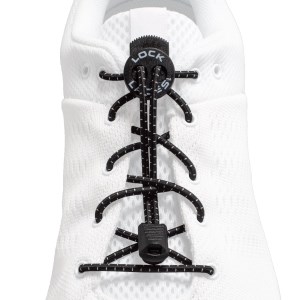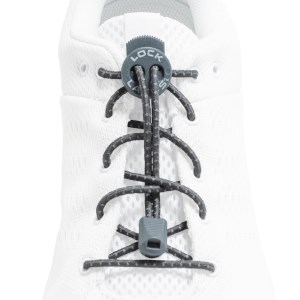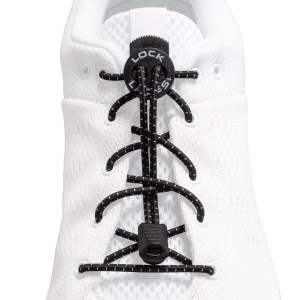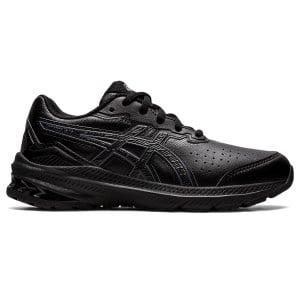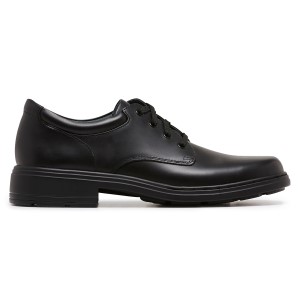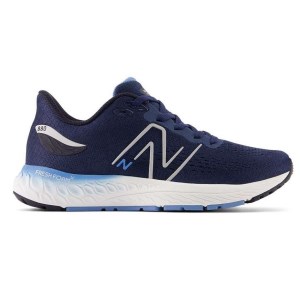How To Choose The Best School Shoes
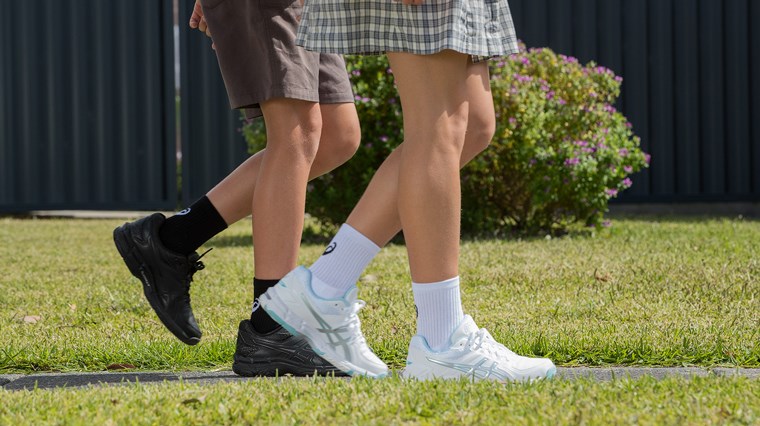
It’s no secret that your child’s feet are constantly growing and that your young champion is guaranteed to put their school shoes through it all during the twists and tumbles of primary school life.
From classroom to playground, Sportitude is here to help you learn your ABCs of school shoes to guide your child’s shoe selection and help your little athlete get back to school in comfort.
A: Adult Feet vs Children’s Feet
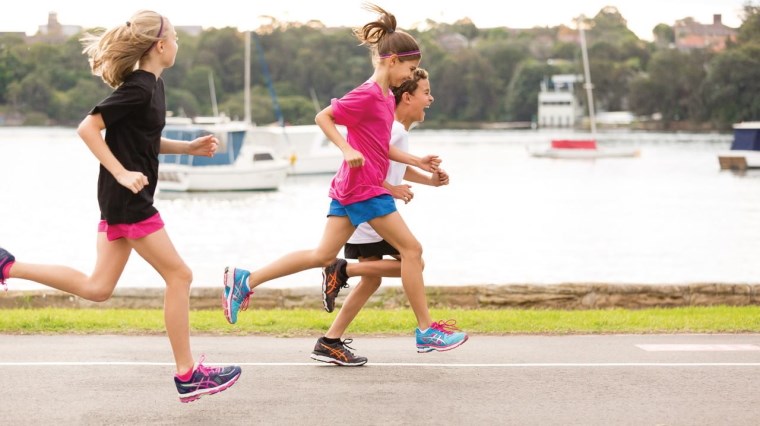
Down to their very bones, children’s feet have different needs compared to full-grown adult feet. Once your child is 4 years old just short of starting kindergarten, they’ll have 45 bones in each foot (up from the 26 – 28 bones they had when they were a newborn). As they grow into a teenager, these smaller bones will fuse together into 26 larger bones to support their movement and strengthen their feet.
A school shoe that provides support is essential for growing feet and developing bones.
From Monday to Friday your child lives in their school shoes during both learning and play. The best school shoes generally are on a wider platform without an exaggerated heel to ensure stability. They have a structured, foot-hugging heel counter for a locked-in fit to resist excessive movement of the foot inside the shoe. You can test this by pushing on the heel counter of the shoe with your thumb from behind and squeezing the sides to test if it’s firm and resists collapsing in.
A well-fitting, supportive school shoe will decrease the risk of your child suffering from sore knees, back pain or other injury and can potentially prevent problems associated with flat feet or developing a poor posture in future.
B: Buckles vs Velcro vs Laces
Hook-and-loop strap or Velcro kids’ shoes are great for the little feet of the family. Young children gain confidence in being able to strap their school shoe on without the help of a parent or guardian. As they grow, your child can transition to shoe laces that are elastic if desired or a traditional lacing system. Buckled school shoes will also do the job but can be a touch fiddly and frustrating for small hands to secure correctly and are more time consuming than the strap-and-go option.
A traditional lacing system has numerous benefits for older primary schoolers and high schoolers – creating a personalised fit and allowing you or your child to put these Pro Lacing Tips into play. If they aren’t quite ready for tying their shoes on their own, elastic laces like those from Lock Laces are a fantastic option to turn any school shoe into a no-tie shoe and are available in multiple colours to put the fun back into their footwear (as long as this is in line with their school’s uniform policy).
Whereas any of the above fastening systems are acceptable and allow for minor adjustments to the fit as your child’s feet grow, slip-on shoes are best avoided for school. These run the risk of flying off during play and don’t have the security or adaptability of the above options.
It’s also worth teaching your child to undo the fastening system – whether buckle, hook-and-loop strap or laces – before removing the shoe rather than kicking their shoes off as they go through the front door of your home. This will help avoid putting pressure on the fastening mechanism and reduce damage to the structural integrity of the school shoe to increase its lifespan.
-
Lock Laces Original - No-Tie Elastic Shoe Laces
-
Lock Laces Original - No-Tie Elastic Shoe Laces - Limited Edition
-
Lock Laces Original - No-Tie Elastic Shoe Laces - 2 Pair Pack
C: Comfort & Durability – traditional school shoes versus ‘sport’ school shoes

Comfort is a priority to allow your child to learn and move distraction-free. Children’s feet must handle a higher load of stress than an adult foot in comparison to their size – tolerating high energy, everyday play that keeps them active and healthy.
It can be tempting to gear up your little athlete in their go-to kids’ running shoes for school and hope that they work as a two-in-one, knowing that they already love to wear them. However, keep in mind that running shoes are designed for exactly that – running. Of course, running shoes do tick off characteristics you’d also want in a school shoe like being lightweight and cushioned, but they are by no means ready to withstand living on your child’s feet 35 – 40 hours per week.
Running shoes provide traction and support specific to walking, jogging or running in a straight line – so they will likely wear down sooner and not provide enough support for playtime that involves multi-directional movement.
Luckily, there is a trend of school shoes becoming available in more lightweight, running or sport-inspired styles. The reverse is also true, with versatile kids' sports shoes becoming available in school-ready colours (all-black) like the Asics GT-1000 SL 2 kids' cross-training shoes. These synthetic leather styles are suitable for all-day wear - keeping in mind that when your child isn’t sitting in the classroom, they’re likely to be dashing around the playground at recess and lunchtime.
When weighing up traditional kids' school shoes with more sporty styles, there are several factors to consider. Traditional leather school shoes tend to be heavier, stiffer and take time to mould naturally to your child’s feet. Some children will not be able to tolerate this extended break-in period.
However, traditional school shoes are a winner when it comes to durability and support. They often feature natural leather uppers like the popular Clarks kids' school shoes to offer a greater tolerance to the elements and resistance to scuffing compared to synthetic materials like mesh, while remaining breathable and offering a cushioned footbed. Cushioned midsoles are important to provide shock absorption when walking on hard surfaces like paved school yards. Knowing your child is likely to play on hard, abrasive surfaces outdoors, the durability of the outsole is essential to take into account – making hard-wearing rubber outsoles the go-to.
Choosing the type of school shoe is a tough call that should be based on you and your child’s preference. Remember, it’s A-OK to have two different shoes for school – a traditional black leather school shoe for standard school days and a sports shoe or kids’ running shoe for physical education. Going down the cross-trainer road with the supportive Asics GT-1000 SL 2 (shown above) or other kids’ cross training shoes is a suitable option for active school days and most sports.
If your child does a particular sport regularly on the weekend, it’s best to get the right shoe for the right job – whether it’s kids’ netball shoes, kids’ tennis shoes, kids’ basketball shoes or kids’ football boots. Having multiple shoes on-call for their specific purpose will help extend the lifespan of your child’s entire shoe rotation in the long run.
D: Dress Code
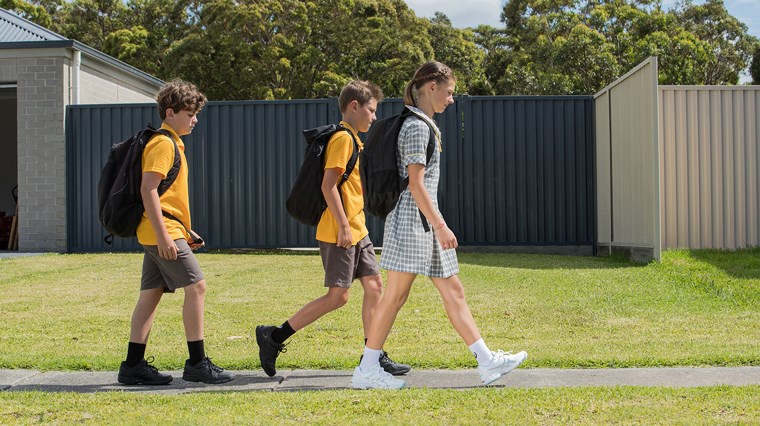
Before purchasing school shoes, your homework as a parent or guardian is to familiarise yourself with the uniform policies of your child’s school. Some schools request that your child only wear all-black, leather school shoes whereas others are more flexible in their policies, providing more freedom in terms of choice of styles, materials and colours as long as the shoes are enclosed.
E: Expense
Although it’s important to have a budget for the school year in mind, the phrase you get what you paid for should be taken into account. This doesn’t mean the most expensive shoe is necessarily the best for your child as no two feet are the same, but it does mean it’s important to avoid no-name school shoes that are unlikely to survive the rigours of your child’s play and adventures, let alone potentially increase their injury risk due to cheap materials, poor structure and design.
Specialists in footwear like Clarks, Nike and Asics are built upon decades of research to give your child the best quality in terms of cushioning, support and durability as their feet develop. You can’t stop your child’s feet from growing out of their school shoes when it’s time, but you can use shoe care accessories or kits to increase the lifespan of their school shoes and keep them in like-new condition for longer.
Sof Sole offers a broad shoe care range, with Sof Sole Premium Protect to waterproof shoes and guard against stains, Sof Sole Black Shoe Polish to condition leather school shoes and Sof Sol Shoe Deodorising and Freshener Balls – because even little feet sweat.
F: Fit & Flexibility

Fit
There’s a trend to size up when buying kids’ school shoes to accommodate growing feet. Although parents have the best intentions at heart, an ill-fitting shoe – whether too large or too small – can have negative consequences on immature feet, increasing the risks of blisters, corns, calluses, ingrown toenails and other common foot problems.
As we mentioned previously comfort is always the priority, alongside injury prevention.
If your child’s shoes are too large, it will encourage toe dragging, meaning the school shoe will likely wear out early as well as increase the risk of your child tripping during active play or walking with poor posture.
When fitting your child for a shoe, a little bit of growing room is OK but it’s important to keep this in check and not overdo it – even half a size off their actual size can be problematic.
The goal is to provide 1-2cm of wriggle room from the end of the largest toe to the end of the shoe at the forefoot (about the width of your thumb). This prevents the toes from being squashed or restricted, without the shoe feeling ‘sloppy’ or ‘clunky’ on the foot.
A school age child may need anywhere between 1 - 3 new shoes a year – with 5-7 year olds potentially going up a size every 6 months. For 8-10 year olds that are more likely to go up a size each year, it’s possible the shoe will wear out before your child grows out of them! An unexpected growth spurt may also throw your estimate of how many school shoes your child needs per year off track.
Flexibility
There’s a sweet spot in terms of flexibility when it comes to school shoes. Remembering that children’s feet have more bones than a fully developed foot, they are naturally more flexible. Allowing them to activate their feet fully will help strengthen developing bones and enhance their movement skills. The outsole of their school shoes should be the most flexible at the ball of the foot where the forefoot engages to toe-off, and firmer at the midfoot and heel for structure and support.
Vivobarefoot kids' shoes take this to the next level – with school shoes that are extremely flexible to the point they can be scrunched up to then spring back into shape. This provides a barefoot experience with thin, bendy outsoles for zero restrictions to movement, but lacking the in-built support of firmer shoes. If you’re considering barefoot vs traditional shoes, it’s worth consulting your child’s podiatrist to find out if barefoot shoes could potentially be the right fit for them.
G: Guidance For Overpronation – is it necessary for your child?
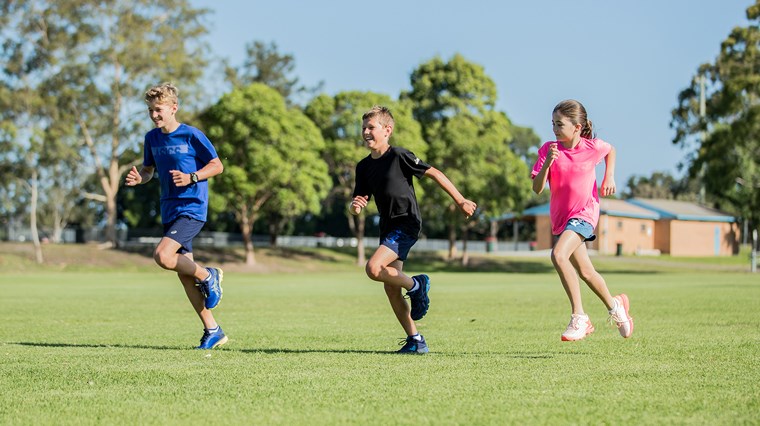
Most kids’ shoes are on a neutral platform, meaning they do not have stability technologies designed for overpronation guidance. This is because young feet are constantly growing, and the arch of the foot is not fully formed until the age of 6-8 years old. This means children start their movement journey with flat feet and stability technologies like a medial post or Asics LITETRUSS medial support are usually only necessary further down the track or not at all.
It can be difficult to determine if their feet overpronate (collapse/roll inwards) simply by looking at your child walking or running. Flipping their shoes upside-down can provide insight by examining the wear pattern. If there is excessive wear beneath the heel at the medial side of the shoe (inner edge, towards the big toe) it is likely your child experiences overpronation.
If your child does suffer from excessive overpronation, the Asics Gel Kayano 29, Asics GT-2000 10 and New Balance Fresh Foam X 860v12 kids’ running shoes offer a stable ride and are certainly worth a look for school sports days, after a consult with a shoe fitting specialist.
H: Homework For Healthy Feet
Encourage your child to wear their new school shoes at home to help them wear-in gradually – even if it’s just as they’re going about their usual routine around the house in the 1-2 weeks before they return to school.
Starting them off by wearing their school shoes an hour a day and increasing this amount as the new school year approaches is recommended. If they can wear them for at least 5 hours at home in comfort, then they shouldn’t have a problem in the classroom or playground. This will also help to highlight any irritation, pressure points or pain that potentially needs to be addressed.
Their school shoes should be comfortable from the get-go, so if there’s a problem it’s worth viewing our returns & exchanges policy and finding a better fit to get off to a good start.
The Wrap Up
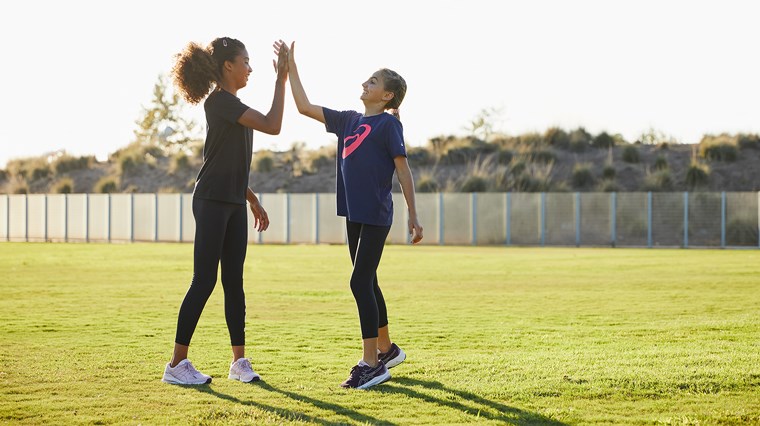
Feet shouldn’t be perceived as a separate part of the body or skeletal system. From the ground up, they are the foundations of a healthy posture and gait.
From their first steps in the playground and classroom, having the best school shoes for your child’s feet makes all the difference in supporting an active lifestyle – at school and beyond.
Don’t forget to buy breathable and sweat-wicking kids’ socks with their school shoes to keep your little athlete moving happy and fresh on their feet from roll call to the end of day school bell (after checking their school’s uniform policy on socks).
If you need any fitting advice for school shoes or other kids’ shoes, please don’t hesitate to contact our Sportitude shoe experts.
Happy back to school!
If you liked this, then you'll love:

